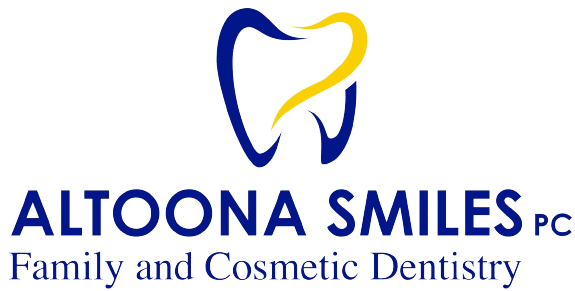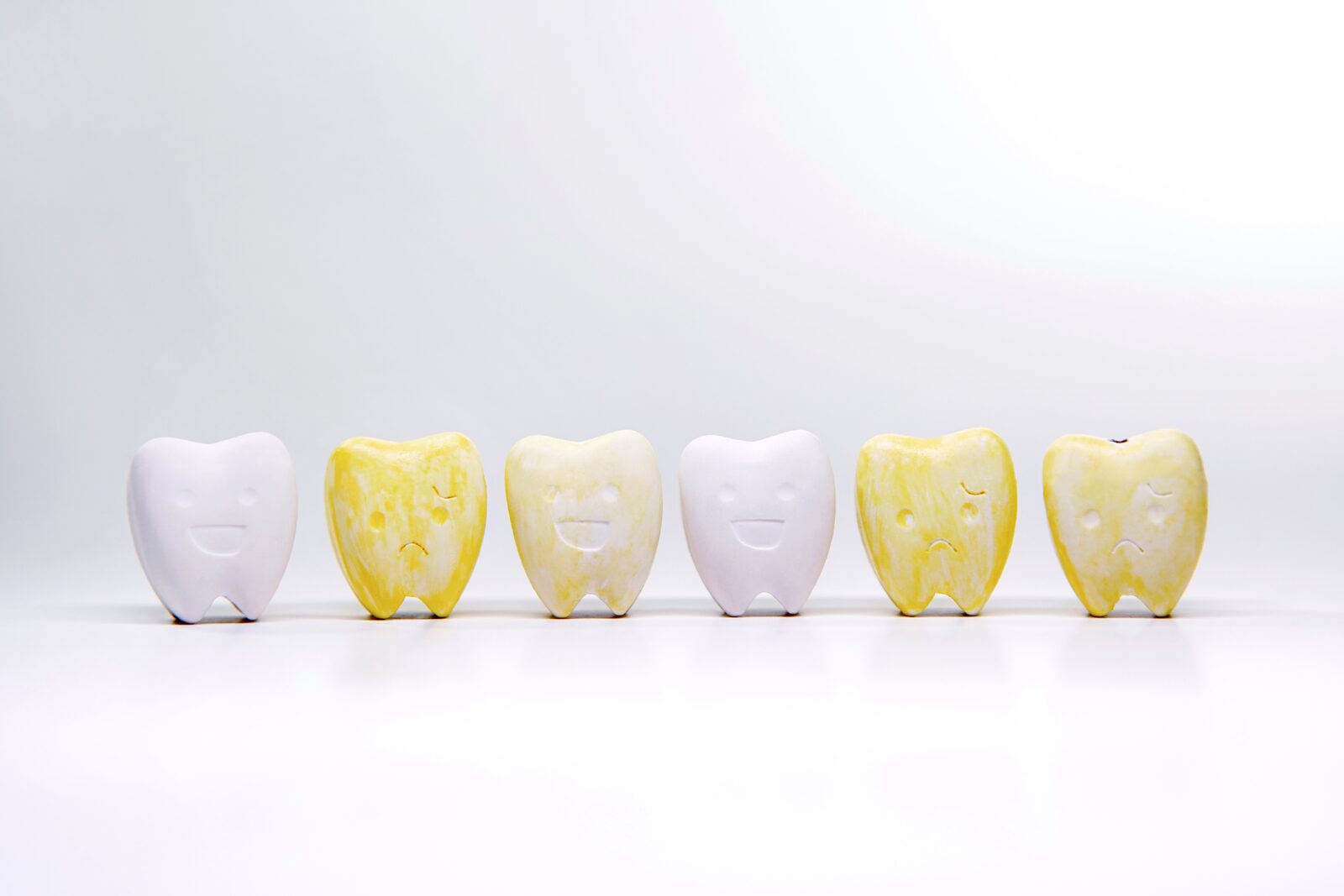A bright and radiant smile can do wonders for your confidence and overall appearance. However, many people struggle with yellowing teeth, which can be caused by a variety of factors. In this blog, we will explore 10 common reasons why teeth can become discolored, ranging from genetics to lifestyle choices, and discuss effective methods to whiten your teeth and restore your dazzling smile.
Reasons for Yellow Teeth
Genetics:
Genetics can play a significant role in the color of your teeth. The shade and thickness of enamel, the outer protective layer of your teeth, are largely determined by your genetic makeup. Some people inherit genes that lead to naturally thinner enamel or enamel with a more yellowish tint. Additionally, the genetic composition of dentin, the layer beneath the enamel, can also influence tooth color. While genetics can predispose individuals to yellowing teeth, it’s important to note that there are still effective methods available, such as teeth whitening treatments and cosmetic dentistry, to improve the color and enhance the overall appearance of one’s smile.
Dentin:
Dentin, the layer located beneath the enamel of your teeth, can be a significant factor in causing yellow teeth. While enamel is the outermost protective layer that gives teeth their white appearance, dentin has a natural yellowish or brownish hue. Over time, due to factors like age, wear and tear, or enamel erosion from acidic foods and beverages, the dentin beneath the enamel may become more visible, leading to teeth appearing yellow. Dentin’s inherent color can become more pronounced as the enamel thins or develops microcracks. While dentin can contribute to yellow teeth, there are various teeth whitening treatments and cosmetic dentistry procedures available to help mask this underlying color and restore a brighter, more attractive smile.
Smoking:
Smoking is a well-known culprit when it comes to causing yellow teeth. The chemicals found in tobacco, particularly tar and nicotine, are notorious for staining teeth. Over time, the tar can gradually accumulate on the tooth enamel, leading to unsightly yellow or brownish discoloration. Smoking not only stains the surface of the teeth but also contributes to overall poor oral health, increasing the risk of gum disease and tooth decay. Even with meticulous oral hygiene, such as regular brushing and flossing, it can be challenging to prevent or reverse the yellowing caused by smoking. The most effective way to maintain a brighter smile and improve oral health is to quit smoking altogether, coupled with professional teeth whitening or other dental procedures recommended by your dentist.
Wear and Tear:
General wear and tear over time can indeed contribute to the development of yellow teeth. Teeth endure daily use, from chewing food to various mechanical forces, and this wear can gradually lead to changes in their appearance. As enamel, the outermost protective layer of teeth, becomes thinner due to regular use, the underlying dentin layer, which naturally has a yellowish or brownish hue, may become more visible. This increased visibility of the dentin can result in teeth appearing more yellow or discolored. Additionally, as enamel wears down, it becomes more susceptible to staining from food and drinks, further exacerbating the yellowing effect. While some degree of wear and tear is inevitable, maintaining proper oral hygiene and seeking professional dental care can help minimize the impact of wear and tear on the color and overall health of your teeth.
Diet:
Diet plays a significant role in the color of our teeth, and certain dietary choices can contribute to yellowing over time. Foods and beverages that are highly pigmented, such as coffee, tea, red wine, dark berries, and some sauces, contain chromogens, which are compounds known to cause staining on tooth enamel. Acidic foods and drinks, like citrus fruits and sodas, can weaken enamel, making it more susceptible to staining and allowing the yellowish dentin underneath to become more visible. Additionally, a diet high in sugary or starchy foods can promote the growth of bacteria in the mouth, leading to plaque buildup and eventual tooth discoloration. To prevent diet-related yellowing of teeth, it’s essential to maintain good oral hygiene practices, including regular brushing, flossing, and dental check-ups. Limiting the consumption of staining foods and beverages, as well as rinsing your mouth with water after consuming them, can also help minimize the impact of your diet on the color of your teeth.
Antibiotic Use:
Certain antibiotics, such as tetracycline and doxycycline, are known to cause tooth discoloration, particularly in children whose teeth are still developing. When these antibiotics are taken during tooth development, which typically occurs before the age of eight, they can become incorporated into the dental enamel. As a result, the teeth may develop a yellow, grayish, or brownish hue that is resistant to conventional teeth whitening methods. This antibiotic-induced discoloration is primarily a cosmetic issue and does not affect the teeth’s health or functionality. However, if you or your child has taken these antibiotics during tooth development and have concerns about tooth color, consult with a dentist who can recommend appropriate cosmetic dentistry procedures like dental veneers or bonding to improve the appearance of the affected teeth.
Beverages:
Beverages, particularly those that are highly pigmented or acidic, can be significant contributors to yellow teeth. Coffee and tea, for instance, contain chromogens, which are compounds that can attach to the tooth enamel and cause staining over time. Similarly, red wine and dark-colored fruit juices contain pigments that can leave behind stubborn stains on teeth. Additionally, acidic beverages like soda and citrus juices can erode the enamel’s surface, making teeth more porous and susceptible to staining while also revealing the naturally yellow dentin layer underneath. To minimize the impact of beverages on tooth color, it’s advisable to consume staining and acidic drinks in moderation, use a straw to reduce direct contact with teeth, and rinse your mouth with water after consumption. Regular dental check-ups and cleanings can also help remove surface stains caused by beverages and maintain a brighter smile.
Fluorosis:
Fluorosis is a condition that can lead to the development of yellow or brownish stains on teeth, primarily due to excessive fluoride exposure during tooth development, typically in childhood. While fluoride is essential for strengthening tooth enamel and preventing cavities, an excess of it during the formative years of the teeth can have the opposite effect. Fluorosis occurs when the enamel becomes porous and less resistant to staining, leading to discoloration. The severity of fluorosis can range from mild, with barely noticeable white streaks or specks on the teeth, to more severe cases, where the teeth may have noticeable brown or yellow patches. Cosmetic dentistry procedures like dental veneers or bonding can be effective in concealing the discoloration caused by fluorosis, restoring a more aesthetically pleasing appearance to the teeth.
Teeth Grinding:
Teeth grinding, also known as bruxism, can contribute to yellow teeth in several ways. The repetitive grinding or clenching motion places excessive pressure on the enamel, leading to wear and abrasion. Over time, as enamel wears down, the underlying dentin layer, which has a naturally yellowish hue, becomes more visible, causing the teeth to appear yellow. Additionally, the mechanical forces generated during teeth grinding can create microfractures and rough surfaces on the enamel, which can trap stains from food and beverages. To prevent teeth grinding from further contributing to yellow teeth, a dentist may recommend the use of a nightguard or splint to protect the teeth. Cosmetic dentistry procedures such as veneers or dental bonding can also be effective in restoring both the color and the overall appearance of teeth affected by bruxism.
Trauma:
Trauma to the teeth, such as a severe impact or injury, can potentially cause yellowing or discoloration. When teeth experience trauma, it can result in damage to the blood vessels within the tooth, leading to internal bleeding or hemorrhage. Over time, this internal bleeding can cause a tooth to appear yellow or grayish as the blood pigment breaks down and becomes visible through the enamel. Trauma can also lead to enamel fractures and microcracks, which can trap stains from food and beverages, further contributing to the yellowing effect. In cases of dental trauma, it’s crucial to seek immediate dental attention to assess and address any damage. Depending on the severity of the discoloration, a dentist may recommend various cosmetic dentistry options, such as dental crowns or veneers, to restore the tooth’s natural color and appearance.
Teeth Whitening Methods
There are several popular teeth whitening methods available, each with its own advantages and considerations. Here are some of the most common teeth whitening methods:
Professional In-Office Teeth Whitening:
This is one of the most effective and fastest teeth whitening methods. It is performed by a dentist in a controlled environment. A high-concentration whitening gel, usually containing hydrogen peroxide, is applied to the teeth, and a special light or laser is often used to enhance the whitening process.
- Advantages: Fast results, can lighten teeth several shades in one session, supervised by a dental professional.
- Considerations: May be more expensive than other options, potential for tooth sensitivity, multiple sessions may be needed for desired results.
At-Home Teeth Whitening Kits:
These kits typically include custom-fitted trays or pre-filled strips with a lower concentration of whitening gel compared to in-office treatments. They are used at home over a specified period.
- Advantages: More affordable than in-office treatments, convenience of home use, gradual results.
- Considerations: Takes longer to achieve desired results, potential for uneven whitening, may cause tooth sensitivity, compliance with daily use is essential.
Over-the-Counter Whitening Products:
These products are available without a prescription and include whitening toothpaste, whitening strips, and whitening pens. They contain lower concentrations of whitening agents than professional products.
- Advantages: Affordable and readily available, can be used at home.
- Considerations: Results may be limited, may take longer to see noticeable changes, risk of tooth sensitivity, effectiveness varies among individuals.
Lifestyle Changes:
Avoiding or reducing consumption of staining beverages like coffee and red wine, quitting smoking, and maintaining good oral hygiene can help prevent further staining and maintain whiter teeth.
- Advantages: Sustainable long-term solution, promotes overall oral health.
- Considerations: Does not provide immediate whitening, may not remove existing stains.
Cosmetic Dentistry Procedures:
These include options like dental veneers and dental bonding, which can be used to cover severely stained or discolored teeth with a thin layer of tooth-colored material.
- Advantages: Can effectively conceal deep stains and provide a long-lasting solution, improves overall tooth aesthetics.
- Considerations: Irreversible, may require tooth enamel removal, more expensive than other whitening methods.
It’s important to consult with a dentist before starting any teeth whitening treatment to determine the most suitable option for your specific needs and to ensure that your oral health is in good condition.
Conclusion:
Yellow teeth can be caused by a variety of factors, from genetics and lifestyle choices to dental issues and trauma. Fortunately, there are numerous options available to whiten and enhance the appearance of your teeth. Consult with your dentist to determine the most suitable solution for your specific situation and regain the confidence that comes with a bright, white smile. Remember that maintaining good oral hygiene and making healthier lifestyle choices can go a long way in preventing future teeth discoloration.

